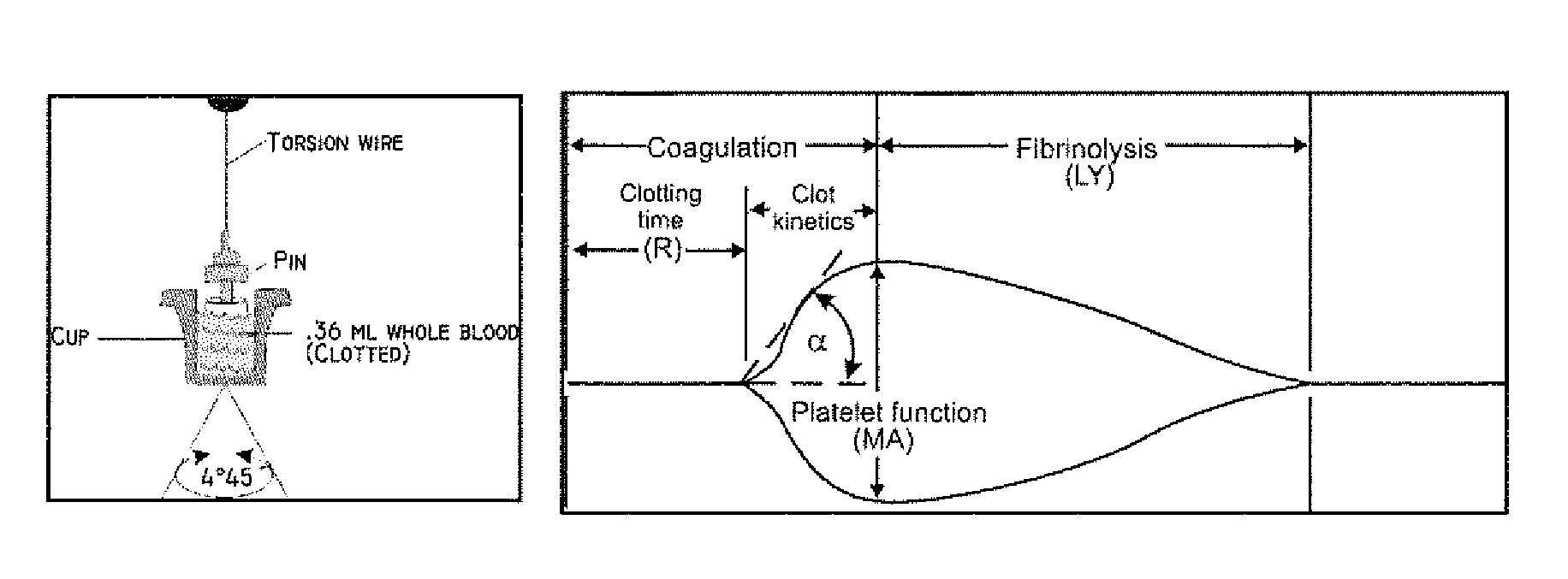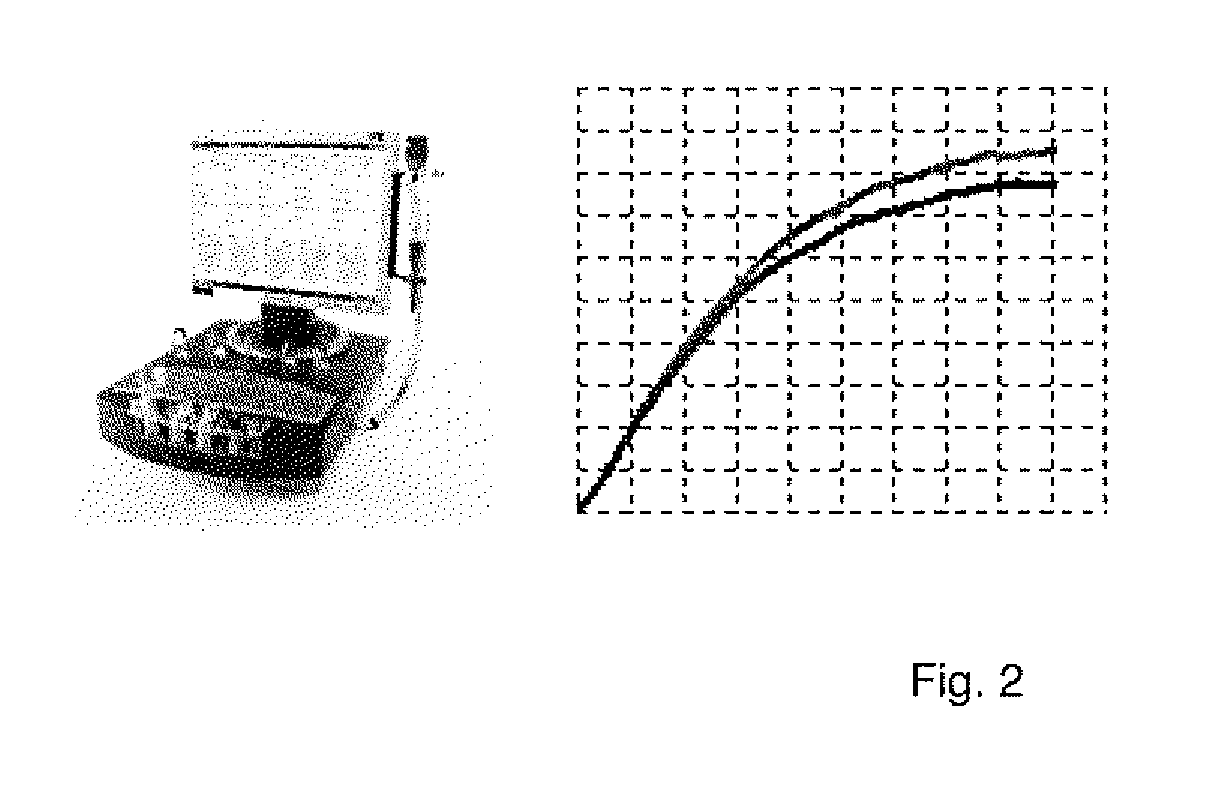Methods of identifying critically ill patients at increased risk of development of organ failure and compounds for the treatment hereof
a technology for organ failure and patients, applied in the field of methods of identifying critically ill patients at increased risk of organ failure and compounds for the treatment of this disease, can solve the problems of pathologic thrombosis, occlusion of vessels and cell death, and increased risk of platelet activation, and achieve the effect of less risk
- Summary
- Abstract
- Description
- Claims
- Application Information
AI Technical Summary
Benefits of technology
Problems solved by technology
Method used
Image
Examples
embodiments
[0137]As described herein above, a main aspect of the invention relates to compounds for treatment that protects the endothelium, prevent pathologic thrombus formation in the microcirculation and preserve platelet number and function and thus may be related to minimizing or preventing development of organ failure, including multiple organ failure (MOF), and, hence, death in critically ill patients by administration of compound(s) limiting the platelets ability to aggregate and form clots and / or by agents modulating / preserving endothelial integrity and / or by agent(s) increasing the rate of thrombus lysis, and pharmaceutical compositions comprising one or more of any of the compounds mentioned.
[0138]Said compounds are preferably antithrombotic compounds and are more preferably selected from one or more of the groups described herein below.
[0139]Antithrombotic compounds[0140]1. Platelet inhibitors[0141]2. Agents modulating / preserving endothelial integrity[0142]3. Pro-fibrinolytic compo...
example 1
[0377]It has now surprisingly been found that in critically ill patients the TEG result upon arrival to the ICU predicts 30 and 90-day mortality. In 88 medical ICU patients, none of the conventional laboratory analysis including APTT, PT, INR, platelet count, D dimer, CRP or haemoglobin differed at admission between 30-day survivors (n=51) and non-survivors (n=37). The TEG at admission, however, differed significantly between survivors and non-survivors, respectively in all three aspects of the haemostatic process R 6.4 (±2.7) vs. 8.07 (±3.0), p=0.002; Angle 61.0 (±13.1) vs. 51.7 (±18.0), p=0.01; MA 57.3 (±13.0) vs. 49.4 (±17.8), p=0.02.
[0378]Thus, a prolonged R was associated with a 3.7 (95% Cl 1.3-10.0) increased odds ratio (unadjusted) for 30-day mortality, a decreased Angle with a 3.8 (95% 1.6-9.5) increased odds ratio (unadjusted) for mortality, and a decreased MA with a 2.8 (95% Cl 1.2-6.8) increased odds ratio (unadjusted) for 30-day mortality. Multivariate logistic regressio...
example 2
[0383]Ninety-four critically ill patients admitted to the intensive care unit (ICU) underwent haemofiltration with or without concomitant Flolan (prostacyclin) treatment. Flolan was administered in a low dose of 4-6 ng / kg / min in the filters to prevent these from clotting and consequently there was only a minor spill over of Flolan to the systemic circulation. The patients were retrospectively reviewed.
TABLE 6Flolan groupNon-Flolan group(n = 24)(n = 70)APACHE II score (mean)2628Platelet count (difference before+14−17vs. after haemofiltration)90 day survival (%)6747APACHE II: Acute Physiology and Chronic Health Evaluation II, ICU: Intensive Care Unit
[0384]The two groups (Flolan vs. non-flolan) were comparable in regards to APACHE II at admission. However, patients in the flolan group were more severely ill as evaluated by a lower platelet count at start of hemofiltration, a higher frequency of severe thrombocytopenia, a higher frequency of DIC diagnoses, a higher maximum SOFA score an...
PUM
| Property | Measurement | Unit |
|---|---|---|
| half time | aaaaa | aaaaa |
| half time | aaaaa | aaaaa |
| half time | aaaaa | aaaaa |
Abstract
Description
Claims
Application Information
 Login to View More
Login to View More - R&D
- Intellectual Property
- Life Sciences
- Materials
- Tech Scout
- Unparalleled Data Quality
- Higher Quality Content
- 60% Fewer Hallucinations
Browse by: Latest US Patents, China's latest patents, Technical Efficacy Thesaurus, Application Domain, Technology Topic, Popular Technical Reports.
© 2025 PatSnap. All rights reserved.Legal|Privacy policy|Modern Slavery Act Transparency Statement|Sitemap|About US| Contact US: help@patsnap.com



